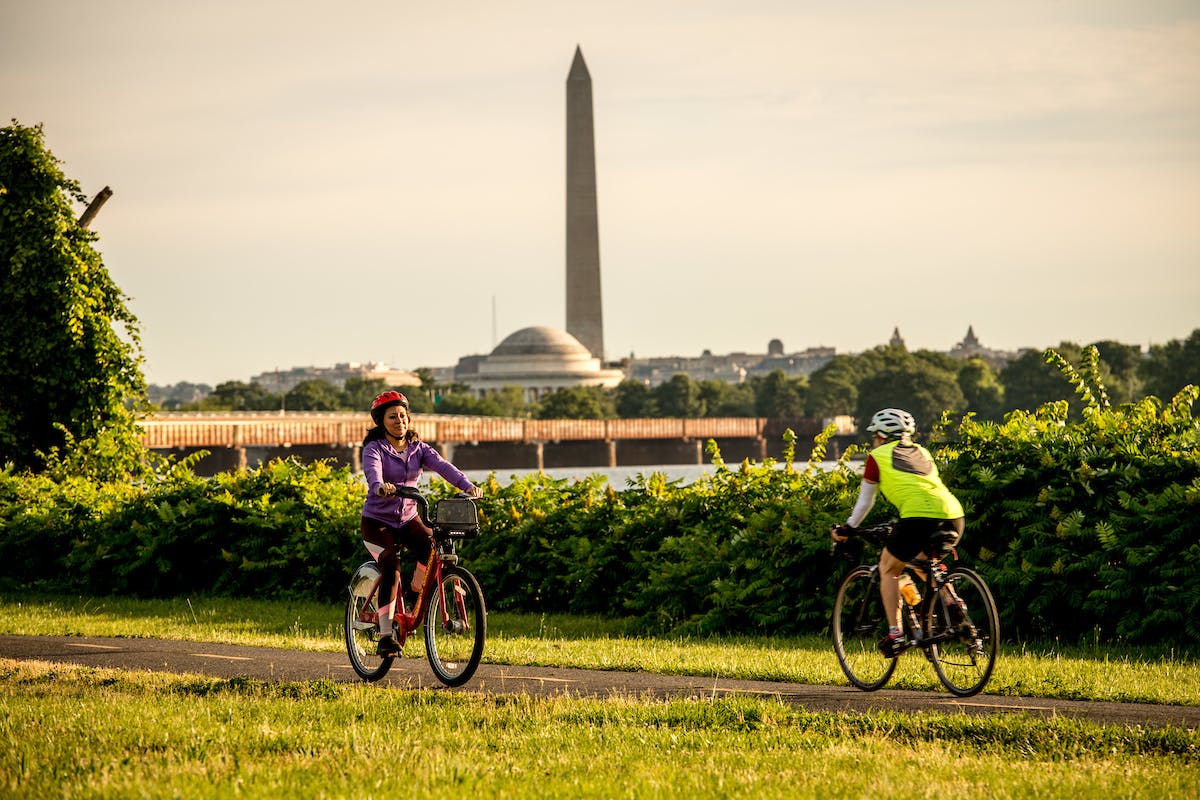What Is the Bipartisan Infrastructure Bill and What Could it Mean for Bikes?
By: Noa Banayan, director of federal affairs

If passed, the bill would advance the state of bicycle policy and funding in the U.S. but leaves opportunities for bold, transformative action on the table.
UPDATE: The United States Senate passed the bipartisan Infrastructure Investment and Jobs Act (IIJA) 69-30 on August 10. While the final bill takes some steps toward better funding for bike infrastructure, if enacted it would not make the bold, transformative investments needed to meet the growing demand for connected, safe places to bike. PeopleForBikes continues to advocate for full funding for the Active Transportation Connectivity Grant Program, as approved by the House of Representatives, and increased funding for the critical Recreational Trails Program as the legislative process moves back to the House. Stay tuned for updates on this page.
The U.S. Senate released the text of the long-awaited, extensively negotiated Bipartisan Infrastructure Bill (BIB) late on the Sunday before Congress usually leaves Washington, D.C., for the August recess. Our analysis is ongoing as the bill moves through the legislative process quickly this week (by congressional standards), but we wanted to share the latest on how the bill compares to our policy goals and progress this year.
As far as programs and funding for bikes go, the BIB (formerly known as the Bipartisan Infrastructure Deal, then the Bipartisan Infrastructure Framework) looks a lot like the Senate Environment and Public Works Committee’s Surface Transportation Reauthorization Act (STRA), which we wrote about here in May. This is no surprise. The bipartisan negotiating group of senators — the G20 — made it clear early on they would be leaning on the work the committee already put into drafting transportation infrastructure policy.
The BIB, if passed, would advance the state of bicycle policy and funding in the United States but leaves opportunities for bold, transformative action to other legislative processes. For context, the House of Representatives advanced the INVEST Act in July — read more on it here — which would make larger strides towards the future of biking and active transportation that we’re advocating for at PeopleForBikes. How the House and Senate will come together on a bill remains an open question. With the August recess fast approaching for the Senate, and already in effect for the House, we may not know the answer until at least September.
See an outline below of what the Senate’s Bipartisan Infrastructure Bill offers and what’s missing compared to the House’s INVEST Act.
IN THE BILL:
- An increase in funding for the Transportation Alternatives Program (TAP) by 60%, with subsequent annual increases. TAP is the largest source of federal dollars for bike projects (like protected bike lanes, trails and multi-use paths). TAP funding is currently limited to $850 million annually, and the bill would increase the program to $1.38 billion in 2022, up to $1.48 billion in 2026.
- A requirement for all states to develop standards for Complete Streets.
- A vulnerable road user assessment (i.e., study how dangerous roads are for people outside of cars).
- Inclusion of the model three-class electric bicycle definitions.
MISSING:
- Full and guaranteed funding for the Active Transportation Connectivity Grant Program at $200 million a year. While this program was added via a hard-fought amendment to the EPW Committee’s STRA, they left the question of funding to the whims of the annual appropriations process.
- Necessary dollars for the Recreational Trails Program (RTP). Shortly before the BIB was introduced, the Federal Highway Administration released a long-awaited study on off-highway vehicle fuel tax revenue (which funds the RTP), showing a gap of more than three times the current funding level ($80 million/year) and what the program should be receiving ($300 million/year). A transportation reauthorization and infrastructure bill is the opportunity to remedy this funding chasm and restore the RTP and our nation’s trails to meet a growing demand.
- Significant funding for the Reconnecting Communities Program, which would support the removal of highways where low-income and minority communities were disconnected by their construction. The BIB only offers $1 billion toward this program.
We’re tracking the legislative process this week as amendments are offered and debated in the Senate. Throughout the rest of August, PeopleForBikes will continue to push for the policies and funding needed to support the growing number of Americans choosing to move and recreate by bike.
